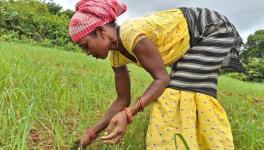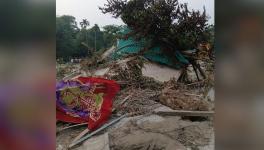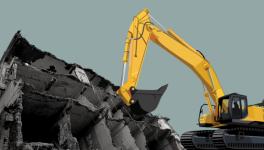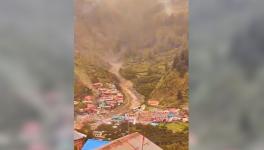Kolkata: Indigenous Azonian Process Flagged as ‘Game Changer in Achieving Net Zero
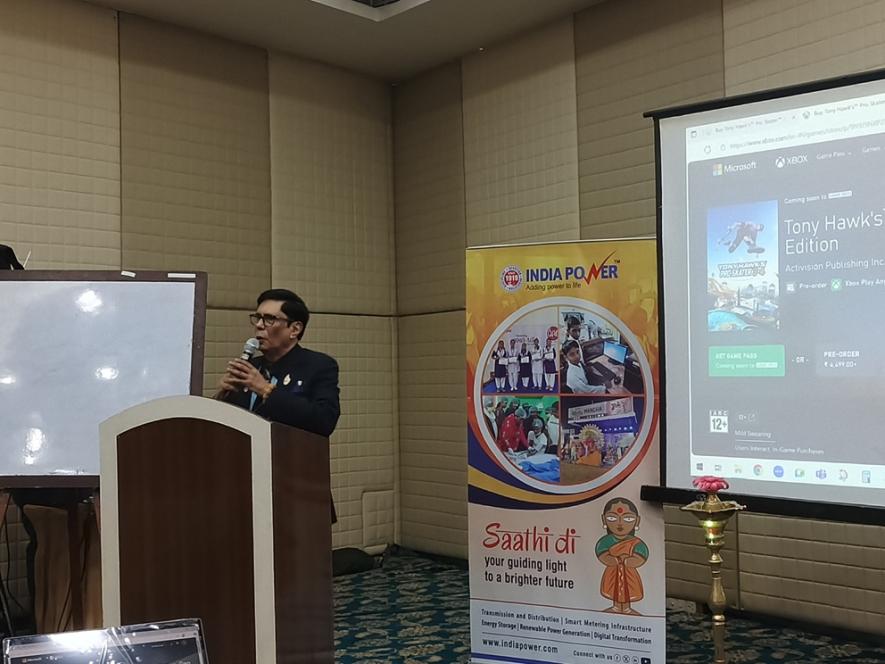
Seminar on carbon management in Kolkata.
Kolkata: By 2030, India has set a goal of reducing carbon emissions by 50% and record net zero by 2070, which means that the amount of greenhouse gases produced should be equal to the amount removed from the atmosphere. Is this attainable?
One such process, the Azonian Process, of carbon capture, claims to be a ‘game-changer’ in this regard. The process was showcased at a recent seminar in Kolkata, titled “Leveraging Carbon and Carbon Management for Profitability: Scopes and Challenges”, organised by think-tank Knowgen Education Services (P) Ltd.
“It’s an indigenous process of carbon capture, the patent of which has already been applied for,” Sridev Mookerjea, a Singapore-based entrepreneur told Newsclick, after showcasing the Azonian Process.
Achieving net-zero emissions means balancing greenhouse gas (GHG) emissions with their removal from the atmosphere, effectively neutralising the impact on global warming. This is done by first reducing emissions as much as possible and then offsetting any remaining emissions through methods, such as carbon sequestration or carbon credits. Net-zero is a crucial global strategy to combat climate change, aiming to stabilise global temperatures and mitigate the severe impact of global warming.
The primary step entails minimising the release of GHGs from various sources, such as fossil fuel consumption, industrial processes, and transportation.
When emissions cannot be reduced to zero, the remaining emissions are offset by removing an equivalent amount from the atmosphere. This can be achieved through utilising natural processes, such as reforestation, afforestation, and wetland restoration to absorb carbon dioxide. Also, technologies like direct air capture (DAC) and carbon capture and storage (CCS) can be employed to remove CO2 directly from the atmosphere or from industrial sources.
All this requires investing in projects that reduce or remove emissions and purchasing credits for those emissions.
Elaborating on the Azonian Process of carbon capture, developed by researcher and principal scientist Souradeep Basak, the prime mover behind the initiative, and Mookerjea, who is also former member of the Board of Directors and Chairman of CSR of the Singapore Indian Chamber of Commerce & Industry, said, “The Azonian Process is a nature-based carbon capture initiative. It utilises the aquatic fern, Azolla, to absorb and store atmospheric carbon dioxide in a vertical farming structure, aiming for a scalable and sustainable solution to reduce CO2 emissions.”
He added that “Azolla is a fast-growing aquatic fern with a high capacity for carbon sequestration, absorbing carbon dioxide at a rate that surpasses many terrestrial plants. Its rapid growth and ability to thrive in water make it suitable for vertical farming applications.”
The process involves a vertical, multi-tiered structure that houses Azolla, allowing for continuous carbon capture through its rapid biomass production, effectively removing it from the atmosphere.
“The process is designed to be a cost-effective and replicable model for carbon capture,” he added.
According to Mookerjea, the Azonian process aims to be a scalable solution, “meaning it can be adapted for various institutions and industries. Its nature-based approach is seen as a sustainable complement to technological carbon capture methods.”
According to the Intergovernmental Panel on Climate Change Annual Report 6, annual anthropogenic emissions were estimated to be 59 ± 6.6 GtCO2e in 2019. The historical net carbon emissions since 1850 to 2019 is e 2400 ± 240 GtCO2e [1], with a remaining carbon budget of 500GtCO2 from 2020 onward to limit global temperature rise to 1.5°C.
With the planet already having warmed by about 1.1°C, scalable carbon dioxide removal technologies are essential to achieve a net zero emission scenario in the second half of the 21st century, he said.
Several negative emissions technologies and pathways have been developed, such as direct air capture, enhanced rock weathering, ocean fertilisation, biomass energy with carbon capture and storage, biochar, and nature-based solutions such as afforestation/reforestation and enhanced algal cultivation. However, there are drawbacks associated with each of the aforementioned processes, either economic, social or environmental, Mookerjea claimed.
At the seminar, he highlighted some ‘unique’ characteristics of the fern, such as it fixes atmospheric nitrogen, can be used as a protein-rich nutritional feed for fish, poultry and dairy livestock, can be converted into biofuels through transesterification, can be used as bio-fertiliser, offsetting, and manufacturing emissions from nitrogenous fertilisers.
Mookerjea said mathematical modelling studies hypothesise that 1,018,023 km of effective azolla cultivation under their assumed growth equations would be equivalent to sequestering the annual net anthropogenic CO2 emissions into the atmosphere.
“In the middle Eocene, blooms of Azolla in the stratified Arctic Ocean may have caused a massive carbon drawdown, metamorphosing the greenhouse earth into the ice-house planet we know today, sequestering an estimated 900-3500 Gt of carbon around 48.5 million years ago, corresponding to a 55-470 ppm reduction in CO2 levels,” he added.
The seminar saw the participation of various scientists, professors and industry experts.
Get the latest reports & analysis with people's perspective on Protests, movements & deep analytical videos, discussions of the current affairs in your Telegram app. Subscribe to NewsClick's Telegram channel & get Real-Time updates on stories, as they get published on our website.









